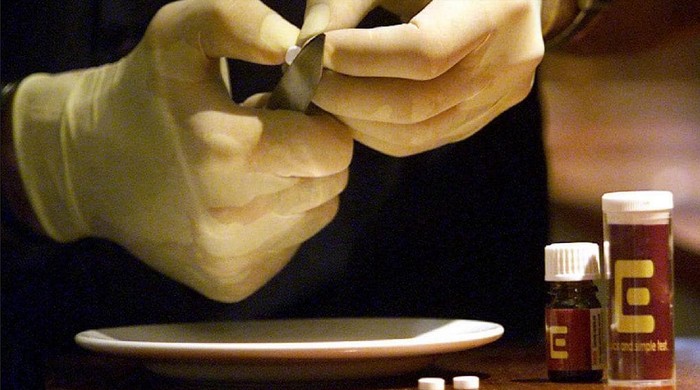Most more likely to use Ecstasy after pills tested
 Media Release DrugFree Australia 13 December 2019
Media Release DrugFree Australia 13 December 2019
Family First Comment:Those who received a test result confirming the substance to be what they thought it was were likely to take as much or more than originally intended…. When it is considered that 90% of the 158 pills presented in the trial contained ecstasy, the drug found to be responsible in all 392 MDMA-related deaths in Australia between 2001 and 2016, (and not from contaminants or other dangerous drugs mixed into the ecstasy pill), it makes it clear why a user would be more likely to use it after the pill has been tested. Drug Free Australia believes that pill testing sends all the wrong messages which will only increase party drug deaths in Australia. “Any organisation that advertised that they would give lessons to drivers who love speeding on our roads on how to speed more safely would be seen as aiding and abetting an inherently dangerous practice, and pill testing does the same by symbolically greenlighting ecstasy.”
The Australian National University evaluation of the 2019 Canberra pill testing trial confirms that the methods used by Pill testing Australia to classify substances they identify is actually increasing the likelihood the user will take that substance.
Drug Free Australia has completed a close reading of the evaluation and believes governments and the Australian public should be alarmed by a key finding – that pill testing increases the likelihood of ecstasy use.
When pill testing identifies a substance to be what the user thought they had purchased, the substance is given an “all-clear” white card which is displayed on a noticeboard in the pill testing tent, declaring it to not contain substances “associated with increased harm / multiple overdoses / death” (see p 11). If a ‘dangerous’ drug is identified, it is given a red card.
Yet while the evaluation stated that “most of the patrons had a generally accurate perception of the contents” of their pills before testing, it also states that “those who received a test result confirming the substance to be what they thought it was were likely to take as much or more than originally intended” and “concordance between expectation and identification is associated with stable or increased intention to take a substance.”
When it is considered that 90% of the 158 pills presented in the trial contained ecstasy, the drug found in Dr Amanda Roxburgh’s study (see p 18) to be responsible in all 392 MDMA-related deaths in Australia between 2001 and 2016, (and not from contaminants or other dangerous drugs mixed into the ecstasy pill), the symbolics of a white card rather than the red card it deserves makes it clear why a user would be more likely to use it after the pill has been tested.
Drug Free Australia believes that pill testing sends all the wrong messages which will only increase party drug deaths in Australia. “Any organisation that advertised that they would give lessons to drivers who love speeding on our roads on how to speed more safely would be seen as aiding and abetting an inherently dangerous practice, and pill testing does the same by symbolically greenlighting ecstasy,” said Research Director Gary Christian.
The evaluation also confirms that only seven pills were discarded, each containing N-ethylpentylone, which would likely come from a batch or batches of 200 or more pills each somewhere in Canberra or Australia which has caused no hospitalisations or deaths. Pill Testing Australia claims that they tell users of the dangers of ecstasy but there was no evidence of counsellors dissuading any user from taking their tested pill, with not one ecstasy user recorded discarding their pills, evidencing zero behaviour change. Drug Free Australia asserts that it is too late to be telling ecstasy users that their substance is dangerous saying the horse has bolted once they have spent $100 purchasing it, and the real need is government-funded social media campaigns telling the truth about ecstasy before they make the cash outlay.
Statistics from England and Wales show that the introduction of pill testing did not produce any reduction in deaths as promised, nor did it appear to change the behaviour of users by getting some to quit using ecstasy, as also forecast by its advocates. While European countries have poor to non-existent statistics on ecstasy deaths, the UK keeps up-to-date figures. Pill testing operated by “the Loop” began in 2013 and by 2016 began expanding into 12 music festivals with government assent. Ecstasy use increased by 76% amongst 16-24 year olds (see Table 1.06), the most prolific ecstasy users, between 2013 and 2017/18. In 2013 there were 43 ecstasy deaths, more than doubling to 92 deaths in 2018.
“The real problem for pill testing is that they red-flag N-ethylpentylone and give ecstasy a white card. With 392 deaths from ecstasy in 16 years, they should be red-carding ecstasy for the real killer it is, which means that they best take their equipment and go home because most bring ecstasy”, said Mr Christian. According to the science, ecstasy overdose is rare and most die from normal recreational doses of the substance (see p 25).






